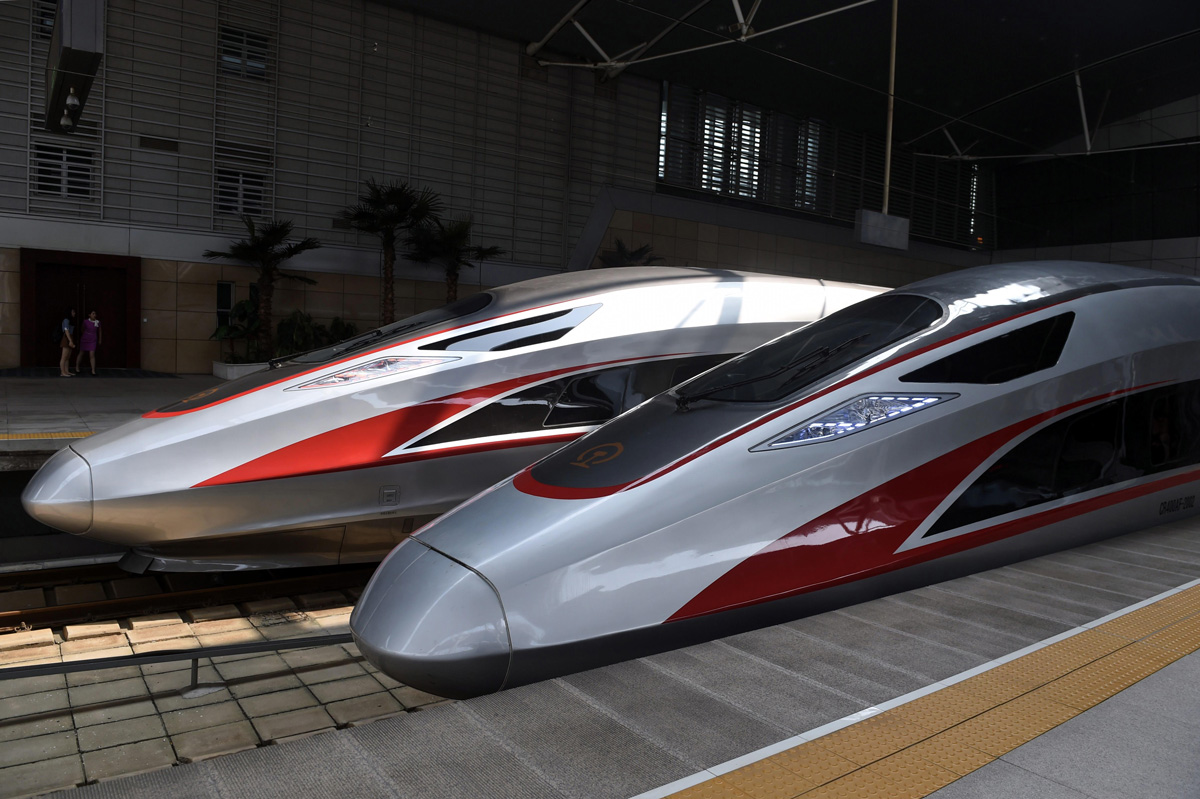China's 'Rejuvenation' Bullet Trains Are the World's Fastest

China was once home to the world's fastest trains, but that position was temporarily derailed in 2011, after a crash between two bullet trains killed 40 people and injured nearly 200 more, leading officials to scale back maximum train speeds from 350 km/h (217 mph) to 300 km/h (186 mph).
But the country is getting back on track, as the next generation of bullet trains — said to be the world's fastest — began transporting passengers Monday (Aug. 21) on the Beijing-Tianjin Intercity Railway, according to the state-run Xinhua News Agency.
Dubbed "Fuxing," which means "rejuvenation," the new high-speed trains are expected to expand service starting Sept. 21 to run between Beijing and Shanghai, traveling at speeds of up to 350 km/h (217 mph). But the trains are capable of going even faster. With maximum speeds of 400 km/h (249 mph), they are the fastest trains in the world, Xinhua News Agency reported. [Hyperloop, Jetpacks & More: 9 Futuristic Transit Ideas]
First unveiled in June, the Fuxing bullet trains were tested on July 27 at their maximum speed. They will operate seven round-trips daily between Beijing and Shanghai, and are expected to reduce travel time from 5 hours (at the current speed of 300 km/h) to 4 hours and 30 minutes, according to the Xinhua News Agency.
To put the speed of the Fuxing trains into perspective, the maximum speed of Amtrak intercity high-speed trains in the U.S. is 150 mph (241 km/h), and only half of the trains run at speeds of 100 mph (161 km/h) or more, according to the railroad's website.
Other types of transportation systems may promise ultra-high-speed travel, but they still have a long way to go before they're passenger-ready.
In Japan, testing is currently underway for trains capable of traveling at up to 500 km/h (310 mph) using magnetic levitation — so-called "maglev" technology — but they won't be operational until 2027. And billionaire entrepreneur Elon Musk's proposed "Hyperloop," a tube track that could carry people in air-cushioned pods at speeds of up to 760 mph (1,220 km/h), is still preparing for a preliminary testing stage, which will be conducted at 200 mph (322 km/h).
Sign up for the Live Science daily newsletter now
Get the world’s most fascinating discoveries delivered straight to your inbox.
Original article on Live Science.

Mindy Weisberger is an editor at Scholastic and a former Live Science channel editor and senior writer. She has reported on general science, covering climate change, paleontology, biology and space. Mindy studied film at Columbia University; prior to Live Science she produced, wrote and directed media for the American Museum of Natural History in New York City. Her videos about dinosaurs, astrophysics, biodiversity and evolution appear in museums and science centers worldwide, earning awards such as the CINE Golden Eagle and the Communicator Award of Excellence. Her writing has also appeared in Scientific American, The Washington Post and How It Works Magazine. Her book "Rise of the Zombie Bugs: The Surprising Science of Parasitic Mind Control" will be published in spring 2025 by Johns Hopkins University Press.









